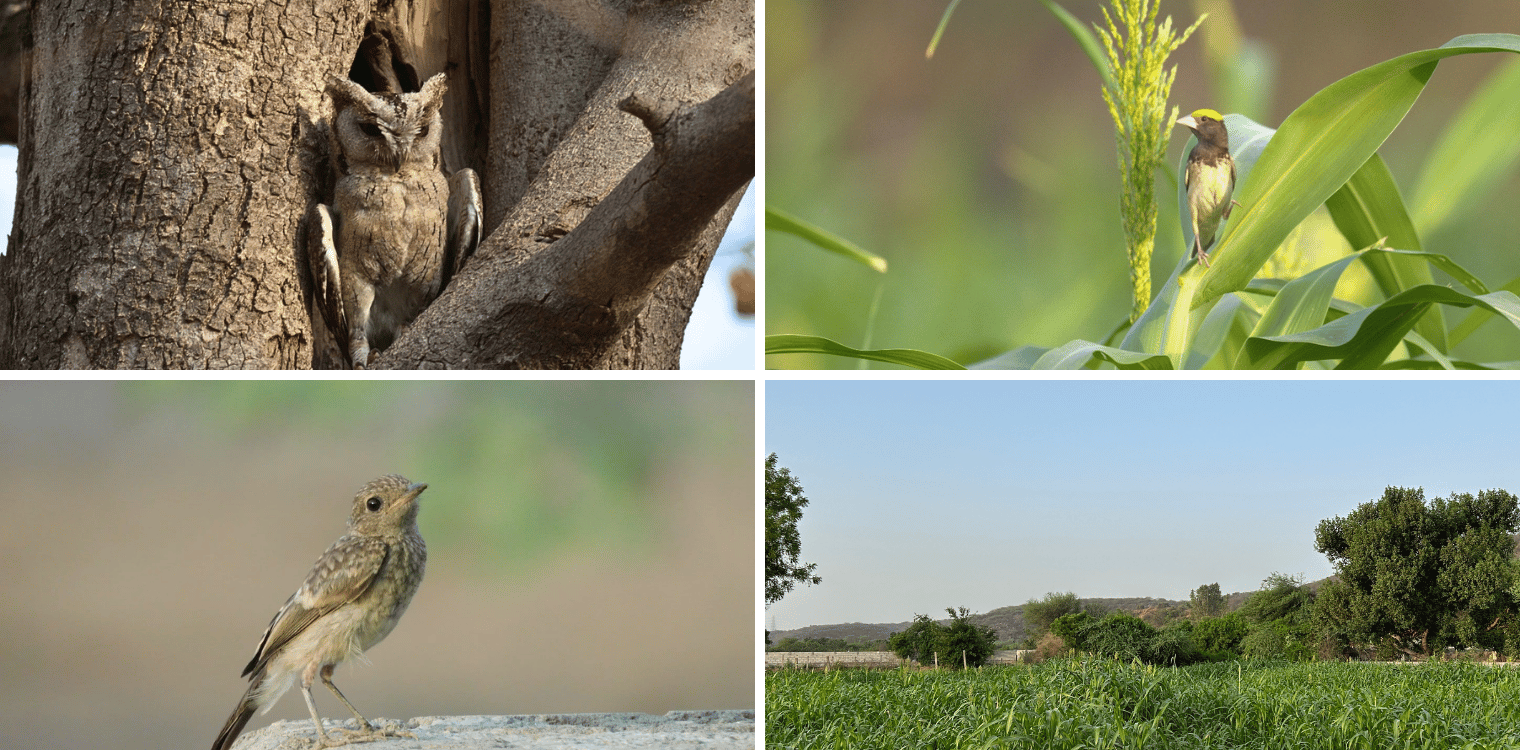Date: 22th September 24
Location: Mangar Bani Hill Forest
Walk expert: Sunil Harsana
No. of participants: 12
Theme: Importance of Aravalli and Mangar Hill Forest
Brief summary of the walk:
We conducted this adventurous walk on Sunday, 22nd September, led by Sunil Harsana. Sunil is a homegrown conservationist, he is renowned as the savior of Mangar Bani for his efforts to protect the Delhi NCR's last natural forest. Also known as the Pied Piper of Mangar Bani, he spreads awareness and has dedicated over a decade to preserving the Aravallis' floral and faunal diversity.
The participants arrived by 7 am at the meeting point, Mauzi Baba Mandir, and the session started with an informative session by Sunil sir. He helped the participants understand the significance of the Mangar region amongst various other interesting snippets of information. He shared that the Aravalli range is one of the oldest mountain ranges in the world.
The walk started with a discussion about the current status of forests as per Govt. of Haryana. The land is declared an Open forest by the govt. Participants also got to know about the history of Mangar village. The further walk was filled with discussions on flora and fauna found in Mangar Hill Forest.

Species of native flora such as Hingot (Balanites roxburghii), karonda(Carissa carandus), Kanthari (Capparis sepiaria), Ronjh (Acacia leucophloea), and Van tulsi, etc. were discussed with their ecological importance. Participants witnessed the magic of Kanthari, and how it has been surviving despite being under the shade of other dense vegetation. People saw how kanthari, a popular shrub, acted as a climber and tree at the same time.
We also witnessed the Danaid Eggfly, both male and female. Discussions were held on its significance. It lies in Schedule I of the Wildlife Protection Act (1972). Danaid Eggfly displays Batesian mimicry, which simply means the female of this butterfly mimics another similar butterfly i.e., the female of the Plain tiger which is a poisonous butterfly. It acts as its defensive mechanism against predators.
We also discussed various policies and public interventions that helped in the protection of the only sacred groves of Delhi NCR. In addition, details of various mammals such as the Indian Leopard, Striped Hyena, Wild Boar, Indian Golden Jackal, Mongoose, and Porcupine, etc. were discussed.
Mr. Sunil along with his partners runs the Mangar eco club also. When he trained the children of Mangar about the biodiversity it holds, they also shared the details of their project which is funded by the Coexistence consortium. This project is helping them in studying various wildlife conflicts in the region.
The walk ended at Mangar Lake of which details were shared at the beginning. Participants came to know that once a mining site was converted into a permanent lake it now must be acting as a water source for various birds and mammals.

We thank Sunil sir for his valuable guidance and a super fun and informative session for all the participants. Participants enjoyed walking into dense patches of Mangar Forest. It was a walk full of adventure, thrill, and filled with adrenaline rush. Though the participants were exhausted at the end of the walk, they enjoyed the journey in its best raw form.
List of species spotted during the walk:
Species of trees, butterflies, birds, and insects were observed during the walk. Some notable species during the walk were:-
Floral species:- Ronjh, Desi babool, Vilayati Kikar, Hingot, Kanthari, Karonda, Palash, Dhau, Van Tulsi.
Butterfly species:- Mottled Emigrant, Forget me not, Peacock Pansy, Danaid Eggfly (Male & Female), Common crow, Common Grass Yellow, Striped Pierrot, Little Tiger Blue, Rice swift, Small Branded Swift, Plains Cupid.
Birds: Indian Peafowl, Shikra, Jungle Babbler, Eurasian collared dove, Laughing Dove, House Sparrow, Common Myna, Long-tailed Shrike, Bay backed shrike, Purple Sunbird, Common tailor Bird, Asian green Bee-eater, Blue-tailed Bee Eater, Wire-tailed swallow, House Crow, Lesser White throat, Pale Sand Martin, Black drongo
Mammals: Golden Jackal, Palm Squirrel, Droppings of Blue bull.
Trip Report By
Alok Kumar
